The gong festival of the Central Highlands people - Photo: Archival material
Trends in social structure transformation, inter-ethnic relations, and their impact and influence on sustainable development in the Central Highlands region.
The Central Highlands region has a natural area of about 54.5 thousand km2 ( accounting for 16.8% of the country's area), and is an important area in socio -economic development and ensuring national defense and security; population of more than 6 million people (accounting for 6.1% of the country's population (1) ). Currently, the Central Highlands region has about 2.2 million ethnic minority people (37.7% of the total population of the region); Many ethnic minorities from northern localities have settled here for a long time (accounting for about 10%) (2) , such as the Tay, Nung, Mong, Thai, Muong, Dao, etc. The Central Highlands is also the long-standing home of 12 indigenous ethnic minorities (accounting for 27% of the total population of the region), including 8 ethnic groups belonging to the Austroasiatic language family (Mon-Khmer group) (3) and 4 ethnic groups belonging to the Austronesian language family ( Malayo-Polynesian group) ( 4 ) . In addition, the percentage of ethnic minorities in the total population of each locality is relatively different, specifically: Kon Tum province is 54.93%; Gia Lai province is about 46.22%; Dak Lak province is 35.70%; Dak Nong province is 31.51%; Lam Dong province is 25.72% (5) .
Before 1975, the people of the Ethnic minorities are concentrated in many relatively independent areas, such as the Southeast Kon Tum to Northeast Pleiku plateau and West Binh Dinh where the Ba-na people live; the Southeast Pleiku plateau to the foot of Chu Dlieya mountain (Dak Lak province) where the Gia-rai people live; the Dak Nong plateau and part of the Di Linh plateau are the territory of the Mo-nong people (6) ... When the country was unified, due to the need for socio-economic development, national security as well as the impact of free migration, the population composition in the region changed greatly; the villages of the local ethnic minorities are interspersed with each other and with the Kinh people or newly arrived ethnic groups, so there are still quite few areas reserved exclusively for the local ethnic minorities. To date, the entire Central Highlands region has 722 commune-level administrative units (including 598 communes, 77 wards, and 47 towns) with 7,768 residential points, of which there are still about 2,764 villages of indigenous ethnic minorities; about 5,000 villages are in a state where many ethnic minorities live together (7) .
The richness and diversity of ethnic groups in the Central Highlands have strongly influenced the transformation of the region's social structure, creating conditions for cultural and religious exchange, connection, harmony, solidarity, and mutual assistance among ethnic groups. Along with development, relations between ethnic groups have expanded, notably within ethnic groups; between indigenous minority groups and newly arrived groups or with the Kinh (the majority); between ethnic groups across borders and internationally (with fellow ethnic groups and other ethnic groups); and between ethnic groups within the same country through the administration and management of the State. These relationships exist in almost all fields, from economics, society, culture, language, beliefs, religion, residential areas, resource management and use to national defense, security, order, social safety (8) ,... To aim for sustainable development of the Central Highlands region, the following socio-economic issues and regional characteristics need to be noted, specifically:
First, thanks to Thanks to the attention of the Party and the State, the Central Highlands region's economy has continuously developed in recent years, especially with the formation of large-scale specialized industrial crop areas within national and international value chains; per capita income has increased, and the lives of the majority of the population, especially ethnic minorities, have improved. However, while the region's economy has developed rapidly, it is not yet sustainable; agricultural production is not yet linked to market demand; development is mainly concentrated in urban areas and along major transportation routes, while remote and isolated areas remain underdeveloped; agricultural labor accounts for a high percentage, production methods are still backward, and the region has not yet escaped from passive farming practices, relying heavily on natural conditions,...
Although the poverty rate among ethnic minorities has decreased annually, the rate is quite slow; in many localities, the poverty rate among ethnic minorities reaches 85% - 90%; the near-poor and re-poor population is still quite large due to lack of land, lack of stable occupations and jobs, and lack of suitable business methods (9) . In many places, people have not fully benefited from health insurance policies, loans, and production support; the destruction and encroachment of forest land for slash-and-burn farming, land transfer, and illegal exploitation of forest products are widespread; child marriage and children out of school have not been completely resolved,...
Secondly, the process of free migration led to a high increase in the population of the Central Highlands, with the Kinh people being the most numerous (about 62.3%); then, many ethnic minorities from the North (such as Tay, Nung, Thai, Dao, Mong...) successively appeared, bringing with them some new religious and belief systems; the indigenous ethnic minorities in 1945 accounted for a very high percentage, but by 2019 only more than 27%. To date, free migration from many other localities to the Central Highlands continues, potentially causing conflicts and forming long-lasting "hot spots"; currently, more than 11,200 free-migrating households have arranged and integrated themselves into residential areas and nearly 19,000 free-migrating households are scattered outside the planning, not yet stably arranged into residential planning projects (10) .
Thirdly, the technical expertise and quality of human resources in the region are lower than the national average. Specifically, out of about 3.5 million workers, the percentage of workers with a university degree or higher is only 6.1% (11) , while the percentage of workers aged 15 and above who have received training is only about 17% (12) . On the other hand, to date, the number of ethnic minority cadres participating in leadership and management in the localities of the Central Highlands region is still low. For example, in Gia Lai province, ethnic minorities account for more than 50% of the population, but only 5,830 cadres are ethnic minorities out of a total of 34,900 cadres, civil servants, and public employees in the whole province (about 16.7%). That rate in Kon Tum province is 15.86% (2,985 people out of a total of 18,814 cadres, civil servants and public employees in the whole province) (13) .
Fourth , in the past, imperialism and hostile forces often exploited religious issues to sow discord, aiming to break national unity, undermine peace, and disrupt the stable lives and development of the people. Currently, the Central Highlands is home to many religious organizations with a large number of followers (approximately 2.3 million); nearly 4,000 religious leaders, 10,000 religious officials, and over 1,300 active places of worship. Among them, Catholicism is the most prevalent religion in the region, and the Central Highlands also has the largest concentration of ethnic minority Catholic followers in Vietnam, accounting for 81% of ethnic minority followers in the Catholic Church in Vietnam. Along with Buddhism, the majority of its followers are Kinh people (currently, there are over 670,000 followers, about 1,900 religious officials, over 2,800 religious functionaries and more than 570 places of worship), in addition there are other major religions such as Protestantism, Cao Dai (14) .
Thursday, region The Central Highlands region holds a crucial geopolitical position for the overall protection, construction, and development of the country; therefore, hostile forces are intensifying their implementation of the "peaceful evolution" strategy. Reactionary organizations are actively supporting and directing overseas FULRO forces to establish the so-called "Degar Autonomous State" in order to incite division and undermine national unity through new, disguised forms with religious or "social charity" connotations, such as the "Mountain People's Association" (MFI); "Montagnard Human Rights" (MHRO); "Unified Montagnards" (UMP)...
The Party and State's policies and guidelines on building and strengthening inter-ethnic relations in conjunction with sustainable socio-economic development in the Central Highlands region.
During the two struggles against French colonialism and American imperialism, the people of the Central Highlands were closely connected, sharing hardships and joys with the people of the whole country like brothers and sisters, thus forming a strong community cohesion; creating a powerful, enduring vitality and becoming a heroic tradition and indomitable spirit of the people here. More than 100 years ago, the great leader VI Lenin demanded that the democratic government must ensure: "an absolute equality in terms of rights for all ethnic groups in the country and the unconditional protection of the rights of all ethnic minorities" (15) . During his lifetime, President Ho Chi Minh also always paid attention to building close relations between ethnic groups to consolidate and strengthen the great national unity. He affirmed: “Whether Kinh or Tho, Muong or Man, Gia Rai or E De, Xe Dang or Ba Na and other ethnic minorities, all are Vietnamese descendants, all are blood brothers and sisters. We live and die together, share happiness and suffering together, help each other in times of plenty and scarcity” (16) and emphasized: “Rivers may dry up, mountains may wear away, but our solidarity will never diminish” (17) . Accordingly, he believed that respecting and helping each other is a natural thing and has become a historical tradition of the ethnic groups on the land of Vietnam, because “We must love each other, respect each other, and help each other to seek the common happiness of ourselves and our descendants” (18) ; Therefore, from now on, " the united nations must be even more united, and those who have strived must strive even harder, to firmly safeguard independence and build a new Vietnam. When we are in hardship, we will all strive together; when we are in peace, we will all enjoy it together" ( 19 ) . Most recently, Resolution No. 43-NQ/TW, dated November 24, 2023, of the 8th Central Committee Meeting of the 13th Party Congress, "On continuing to promote the tradition and strength of national unity, building our country to be increasingly prosperous and happy," sets the goal of building a prosperous and happy Vietnam; Becoming a developed country with high income by 2045 is a common point to encourage and motivate all people and ethnic groups to work together for the future of the nation and the happiness of the people, to "awaken the spirit of patriotism, national pride and self-respect, and promote the great strength of the great national unity" (20) .
Since the reunification of the country, bearing in mind President Ho Chi Minh's instructions, the task of building and developing the Central Highlands region along with the rest of the country towards socialism has always been a priority for the Party and State. They have gradually and effectively exploited the potential and strengths of natural and human resources to serve the cause of improving the material and spiritual lives of the people. However, some policies and guidelines have not been truly effective; the relationship between ethnic minorities and the Party and State, or between indigenous ethnic minorities and the majority or newly migrated ethnic groups, has sometimes been inadequate. In light of this situation, the Party and State have implemented many policies and solutions to raise awareness of the role and position of the Central Highlands region, advocating for better exploitation of its potential and advantages, combined with a comprehensive approach encompassing various fields, from economics, culture, society, national defense and security, to building a political system to ensure rapid and sustainable development of the region. Continuing to implement development solutions must be in accordance with the specific characteristics of the region in terms of geography, history, culture, and society, and in accordance with the characteristics of the local communities. In particular, Resolution No. 23-NQ/TW, dated October 6, 2022, of the Politburo, "On the direction of socio-economic development and ensuring national defense and security of the Central Highlands region until 2030, with a vision to 2045" assesses the opportunities and challenges to build the Central Highlands region to develop even more strongly in the current period through strategic goals, which set specific targets to be achieved by 2030 and a vision to 2045 (21) . Resolution No. 23-NQ/TW clearly states that rapid and sustainable development of the Central Highlands is a major policy of the Party and the State, a continuous, central task with important significance for the development of localities in the region and the whole country; The development of the Central Highlands region must harmoniously combine economic, cultural, and social development, resource and environmental protection, closely linked with national defense, security, and foreign relations; the development of the Central Highlands must be consistent with the national socio-economic development strategy, ensuring uniformity with the national planning system, and aligning with the national strategy on sustainable development, green growth, and adaptation to climate change; building an advanced Central Highlands culture, rich in ethnic identity, unified in diversity, respecting the distinct cultural values of ethnic groups, considering this as the driving force and foundation for the region's development and international integration; and focusing on building and strengthening a clean, strong, and comprehensive Party and political system.
People harvesting coffee in the Central Highlands_Source: phunuvietnam.vn
The solution aims to harmoniously resolve relations between ethnic groups, contributing to building and promoting national unity, fostering self-reliance and self-improvement, and creating momentum and a foundation for sustainable development in the Central Highlands region.
Firstly, continue to effectively and comprehensively implement the Party and State's guidelines and policies (22) in socio-economic development, ensuring stability and harmoniously resolving the relationship between ethnic groups in the Central Highlands. In addition, focus on preserving and promoting the spirit of solidarity and close ties between the Kinh people and ethnic minorities in the region; solidarity between the local ethnic minority people and migrants from other places,... considering this as a precious tradition, an irreplaceable intrinsic strength, creating a basis for sustainable development of localities in the region.
Secondly , regularly disseminate information and educate the public on ethnic/ethnic relations and national/national spirit; foster pure and healthy relationships among ethnic minorities. Proactively combat schemes and tactics that exploit ethnic and religious issues to divide national unity; build relations between ethnic groups on the basis of equality, solidarity, respect, and mutual development within the framework of the Constitution and laws. Strengthen and promote scientific research on the Central Highlands region from many aspects, such as history, ethnicity, culture, psychology, and society; prioritize theoretical research and practical summaries to understand the trends in ethnic relations, in order to provide a scientific basis for the Party and State's policy decisions.
Thirdly, focus on building relationships among ethnic groups based on equality, solidarity, respect, and mutual support for development; ethnic groups have the right to use their own languages and scripts, preserve their ethnic identities, and promote their customs, traditions, and positive cultural values; and promote the cultural heritage and traditional values of ethnic minorities. On the other hand, develop socio-economic development strategies that are consistent with the cultural characteristics of ethnic minority communities; ensure a balanced, harmonious, and reasonable distribution of benefits among localities within and adjacent regions; apply production and business models and address land and forest issues in accordance with the customs, culture, and traditions of the people. Organize a progressive way of life, develop the potential and strengths of each locality and ethnic group to ensure their right to benefits; develop policies that prioritize the development of education and training, and promote self-reliance and self-improvement. Continuously improve the intellectual level of the people, promote the role of intellectuals, influential individuals, and leading and managerial cadres from ethnic minority groups.
Fourth, respect national identity and implement appropriate policies to preserve and promote national culture through the development of projects to exploit and develop the cultural values of ethnic communities; strive to preserve, promote, and absorb the cultural essence of all ethnic groups, contributing to the construction of a common culture while ensuring harmony, solidarity, and unity. Encourage and create conditions for ethnic minorities to learn their own languages and scripts; ensure the right to use their own languages and scripts in legal proceedings; and effectively manage the relationship between preserving traditional culture and religious culture.
Fifth , focus on building relationships between the State and religious organizations on the basis of freedom of belief and religion within the framework of the law, maintaining and developing religion in the spirit of: all religions are equal before the law; the State respects and protects the right to freedom of belief and religion; no one is allowed to infringe upon freedom of belief and religion or exploit belief and religion to violate the law. Prioritize state management of religious activities in each locality; promote the proactive spirit of all levels and sectors in combating and dealing with elements that exploit religion and ethnicity, and religious leaders and followers who conspire to cause division, conflict, and riots. Focus on raising awareness among religious followers and ethnic minorities about the Party's policies and the State's laws related to ethnic and religious issues, etc. In addition, combat and eliminate narrow-mindedness, discrimination, and ethnic division; Step by step, effectively resolve the root causes of conflict, discord, and ethnic separatism, ensuring political stability, social order, and security in the Central Highlands region, and continue to consolidate and promote the immense strength of the great national unity./.
------------------
(1) See: General Statistics Office: Statistical Yearbook 2021 , Statistical Publishing House, Hanoi, 2021, p. 90
(2) See: Report No. 576/BC-HDDT14, dated May 18, 2018, of the National Assembly, "On reporting the results of the survey on the implementation of policies to stabilize production and living conditions for people who spontaneously migrated to the Central Highlands provinces"
(3) includes the following ethnic groups: Ba-na, Cơ-ho, Xơ-đăng, Mơ-nông, Gié-triêng, Mạ, Rơ-măm, Bờ-râu
(4) includes the following ethnic groups : Ede, Jarai, Churu, Raglai
(5) See: General Statistics Office: Results of the entire 2019 Population and Housing Census , Statistics Publishing House, Hanoi, 2020, Table 2, pp. 152-161
(6) See: Nguyen Thi Hoai Phuong: “Some notes on ethnic issues in the Central Highlands today”, Electronic Information Portal of the Ethnic Magazine , June 21, 2013, http://tapchidantoc.ubdt.gov.vn/2013-06-21/e4ae75004011b41c93c0bb3da27dd78c-cema.htm
(7) Central Highlands Steering Committee: “Some issues related to ethnic relations, trends of changing ethnic relations and the situation of implementing ethnic policies in the Central Highlands provinces”, Dak Lak, 2017
(8) See: Nguyen Van Minh: “Some issues concerning ethnic relations in the Central Highlands today”, Journal of Ethnology , February 2019 issue, p. 23
(9) See: Pham Thi Hoang Ha - Nguyen Thi Thu Huyen: “Socio-economic development policy associated with promoting the spirit of self-reliance and self-strength of ethnic minorities in the Central Highlands - Current situation and solutions”, Communist Magazine , No. 1003 (December 2022), p. 95
(10) See: Trieu Van Binh: “The impact of free migration on the socio-economic situation of the Central Highlands provinces”, Electronic Propaganda Magazine , September 23, 2020, https://tuyengiao.vn/tac-dong-cua-dan-di-cu-tu-do-den-kinh-te-xa-hoi-cac-tinh-tay-nguyen-135005
(11) See: Tran Thi Minh Tram - Le Van Phuc: “Developing human resources in science, technology and innovation in the Central and Central Highlands provinces today”, Communist Party Magazine online , March 18, 2023, https://www.tapchicongsan.org.vn/web/guest/kinh-te/-/2018/827162/phat-trien-nguon-nhan-luc-khoa-hoc%2C-cong-nghe-va-doi-moi-sang-tao-o-cac-tinh-mien-trung-va-tay-nguyen-hien-nay.aspx
(12) See: General Statistics Office: Statistical Yearbook 2021, op. cit ., p. 159
(13) See: Pham Thi Hoang Ha - Nguyen Thi Thu Huyen: “Socio-economic development policy associated with promoting the spirit of self-reliance and self-strength of ethnic minorities in the Central Highlands - Current situation and solutions”, op. cit ., p. 96
(14) See: Tran Son: “Ensuring freedom of belief and religion in the Central Highlands”, Vietnam Communist Party Electronic Newspaper , October 7, 2023, https://dangcongsan.vn/bao-dam-quyen-cho-nguoi-dan-toc-thieu-so/tin-tuc/dam-bao-quyen-tu-do-tin-nguong-ton-giao-o-tay-nguyen-645610.html
(15) VI Lenin: Complete Works , National Political Publishing House, Hanoi, 2005, vol. 23, p. 266
(16), (17), (18), (19) Ho Chi Minh: Complete Works , National Political Publishing House, Hanoi, 2011, vol. 4, pp. 249, 250, 249, 155
(20) Nguyen Phu Trong: Promoting the tradition of great national unity, building our country to be increasingly rich, civilized and happy , National Political Publishing House, Hanoi, 2023, p. 17
(21) See: Resolution No. 23-NQ/TW, dated October 6, 2022, of the Politburo, “On the direction of socio-economic development and ensuring national defense and security in the Central Highlands region until 2030, with a vision to 2045”
(22) Resolution No. 23-NQ/TW, dated October 6, 2022, of the Politburo, “On the direction of socio-economic development and ensuring national defense and security of the Central Highlands region until 2030, vision to 2045; Resolution No. 24-NQ/TW, dated March 12, 2003, of the Central Committee, “On ethnic affairs” ; Resolution No. 10-NQ/TW, dated January 18, 2002, of the Politburo, “On socio-economic development and ensuring national defense and security of the Central Highlands region in the period 2001 - 2010”; Conclusion No. 12-KL/TW, dated October 24, 2011, of the Politburo, “On continuing to implement Resolution No. 10-NQ/TW on the development of the Central Highlands region in the period 2011 - 2020”; Conclusion Resolution No. 65-KL/TW, dated October 30, 2019, of the Politburo, "On continuing to implement Resolution No. 24-NQ/TW of the IXth Central Committee of the Communist Party of Vietnam on ethnic affairs in the new situation" ; Decree No. 05/2011/ND-CP, dated January 14, 2011, of the Government, "On ethnic affairs" ; Decision No. 132/QD-TTg, dated October 8, 2002, of the Prime Minister, "On resolving issues of production land and residential land for indigenous ethnic minorities in the Central Highlands",...
Source: https://tapchicongsan.org.vn/web/guest/van_hoa_xa_hoi/-/2018/1109803/giai-quyet-hai-hoa-quan-he-giua-cac-dan-toc%2C-gop-phan-xay-dung-va-phat-huy-khoi-dai-doan-ket-toan-dan-toc%2C-tao-dong-luc%2C-nen-tang-cho-su-phat-trien-ben-vung-vung-tay-nguyen-trong-boi-canh-moi.aspx


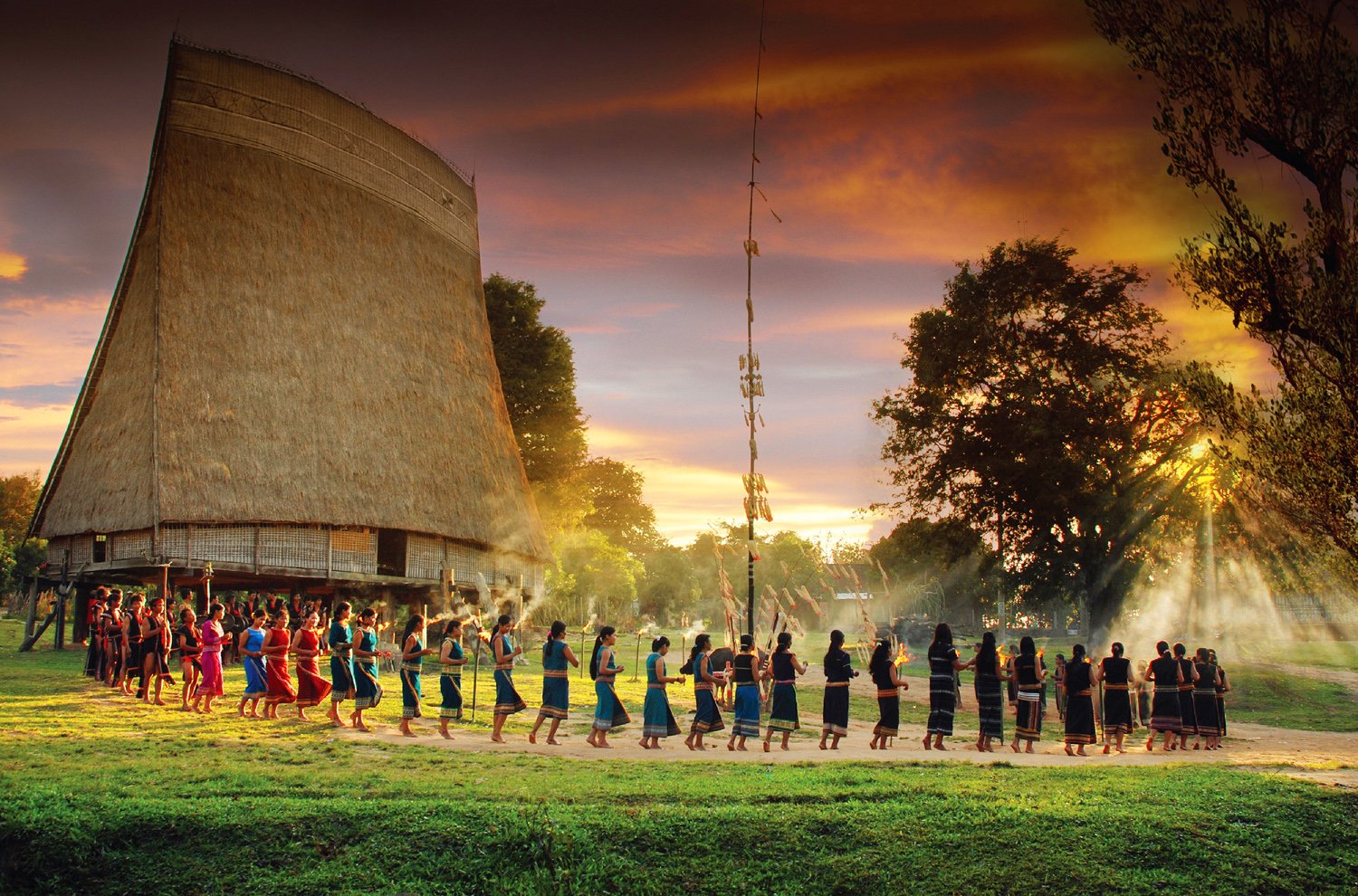
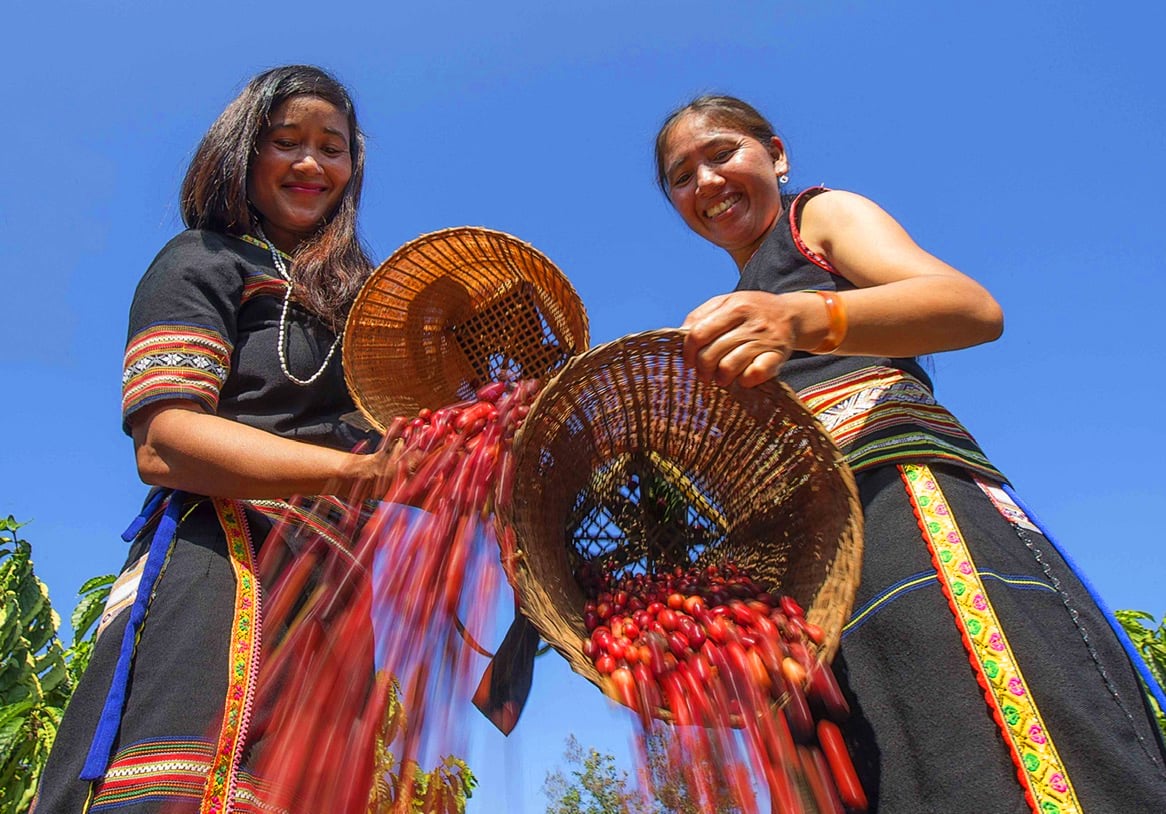

![[Image] Leaked images ahead of the 2025 Community Action Awards gala.](/_next/image?url=https%3A%2F%2Fvphoto.vietnam.vn%2Fthumb%2F1200x675%2Fvietnam%2Fresource%2FIMAGE%2F2025%2F12%2F16%2F1765882828720_ndo_br_thiet-ke-chua-co-ten-45-png.webp&w=3840&q=75)
![[Photo] Prime Minister Pham Minh Chinh receives Lao Minister of Education and Sports Thongsalith Mangnormek](/_next/image?url=https%3A%2F%2Fvphoto.vietnam.vn%2Fthumb%2F1200x675%2Fvietnam%2Fresource%2FIMAGE%2F2025%2F12%2F16%2F1765876834721_dsc-7519-jpg.webp&w=3840&q=75)
![[Photo] Prime Minister Pham Minh Chinh receives the Governor of Tochigi Province (Japan)](/_next/image?url=https%3A%2F%2Fvphoto.vietnam.vn%2Fthumb%2F1200x675%2Fvietnam%2Fresource%2FIMAGE%2F2025%2F12%2F16%2F1765892133176_dsc-8082-6425-jpg.webp&w=3840&q=75)
![[Live] 2025 Community Action Awards Gala](/_next/image?url=https%3A%2F%2Fvphoto.vietnam.vn%2Fthumb%2F1200x675%2Fvietnam%2Fresource%2FIMAGE%2F2025%2F12%2F16%2F1765899631650_ndo_tr_z7334013144784-9f9fe10a6d63584c85aff40f2957c250-jpg.webp&w=3840&q=75)








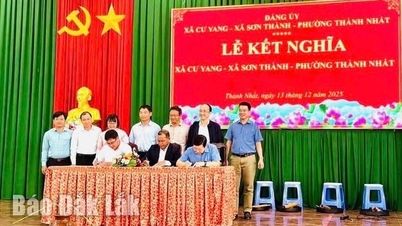

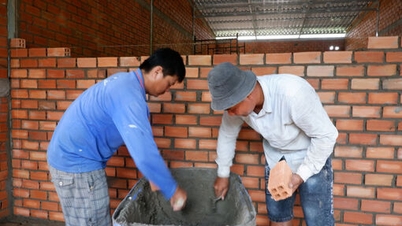












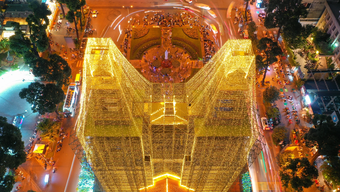

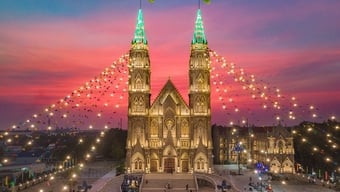

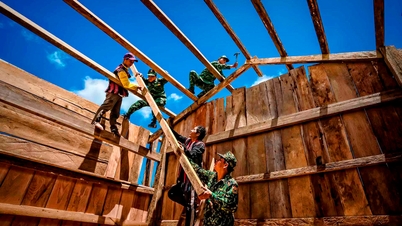

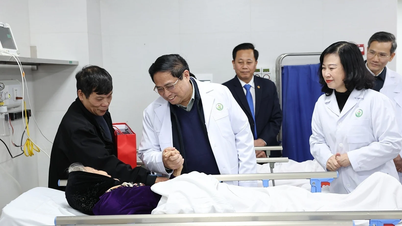
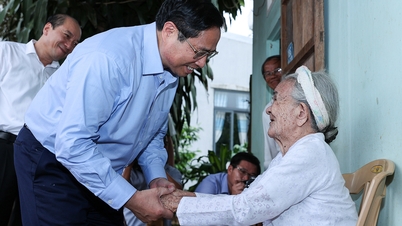
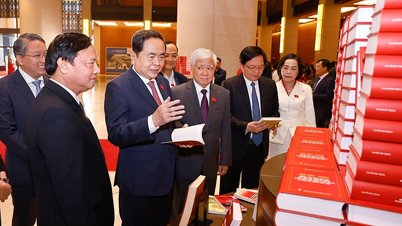






























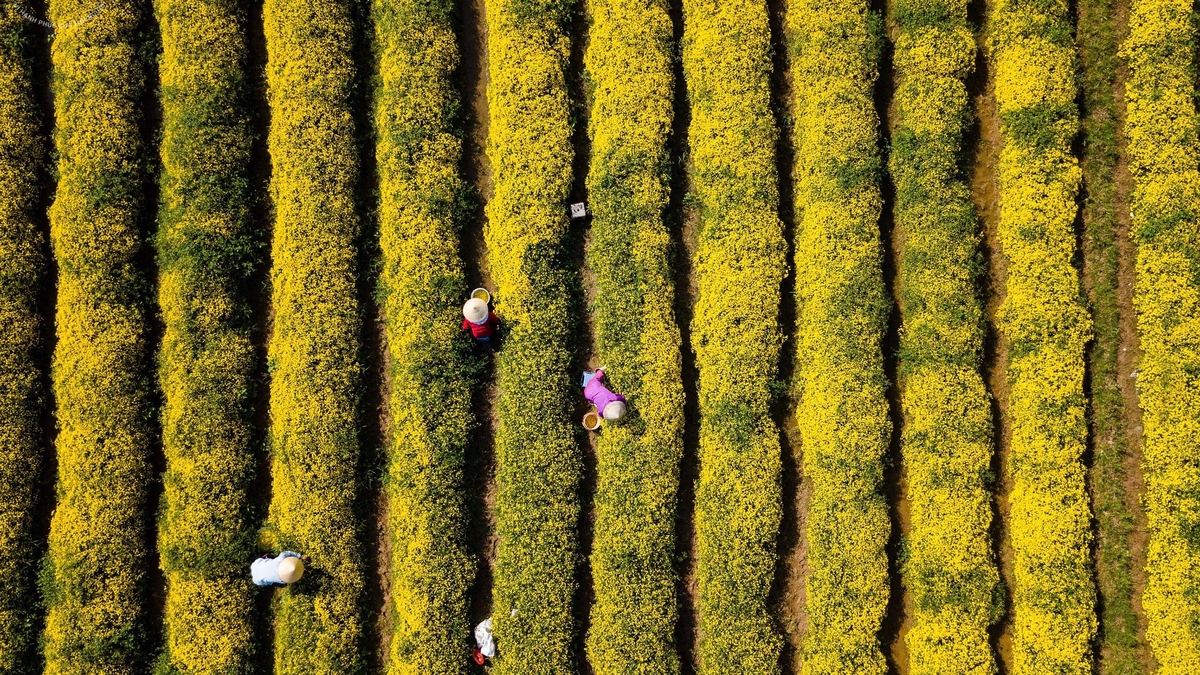
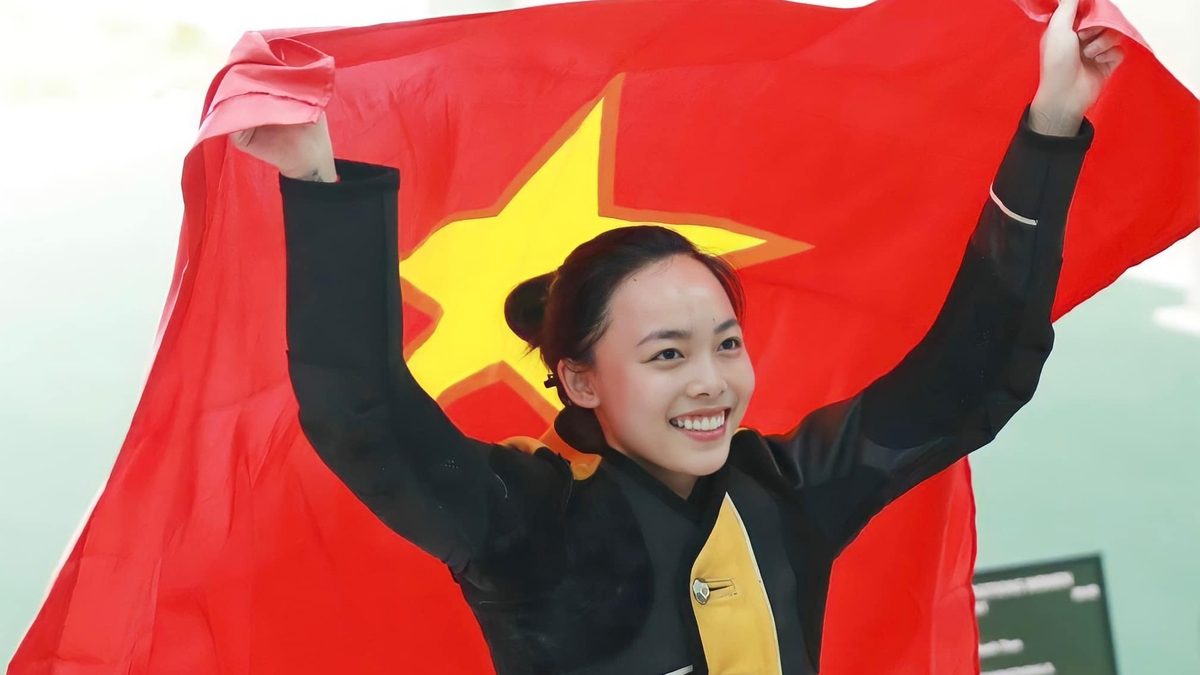
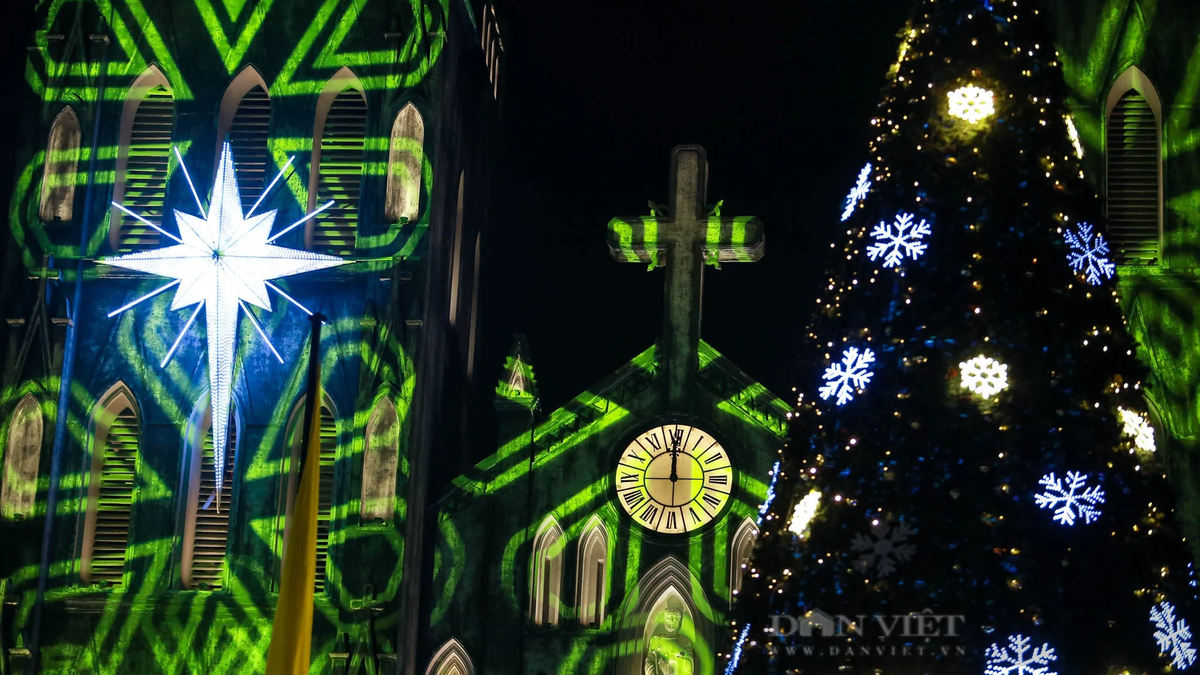
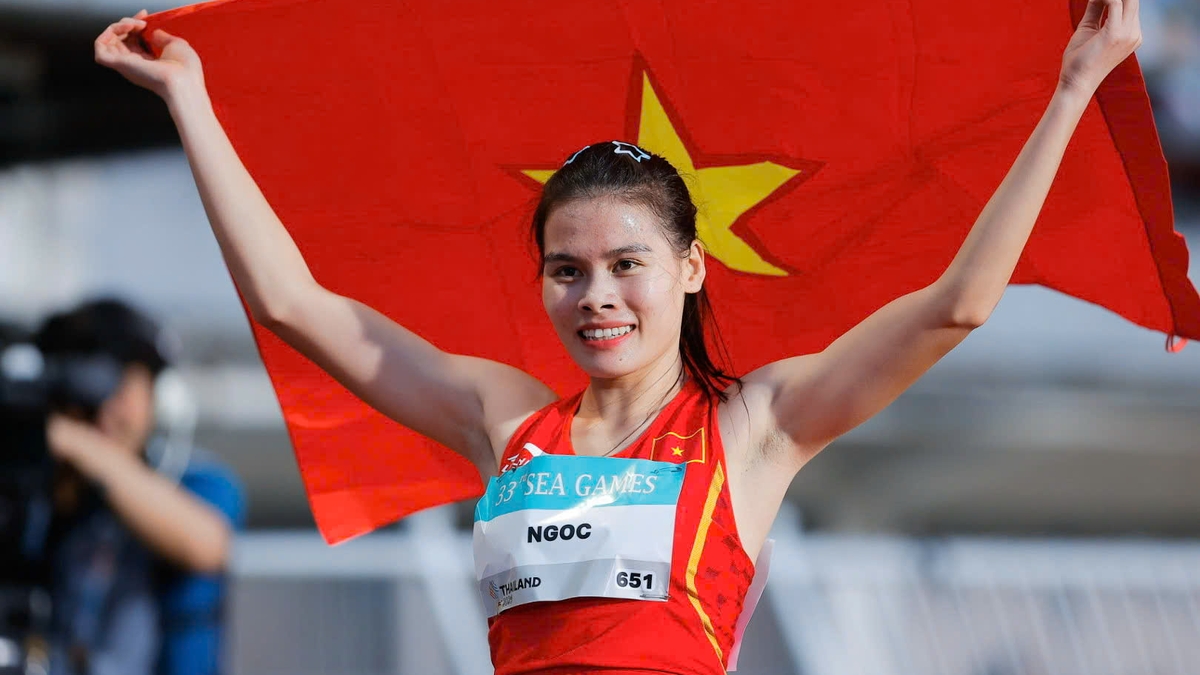










![[Live] Closing Ceremony and Award Presentation for the "Impressive Vietnam Tourism" Video/Clip Creation Contest 2025](https://vphoto.vietnam.vn/thumb/402x226/vietnam/resource/IMAGE/2025/12/17/1765974650260_z7273498850699-00d2fd6b0972cb39494cfa2559bf85ac-1765959338756946072104-627-0-1338-1138-crop-1765959347256801551121.jpeg)



























Comment (0)